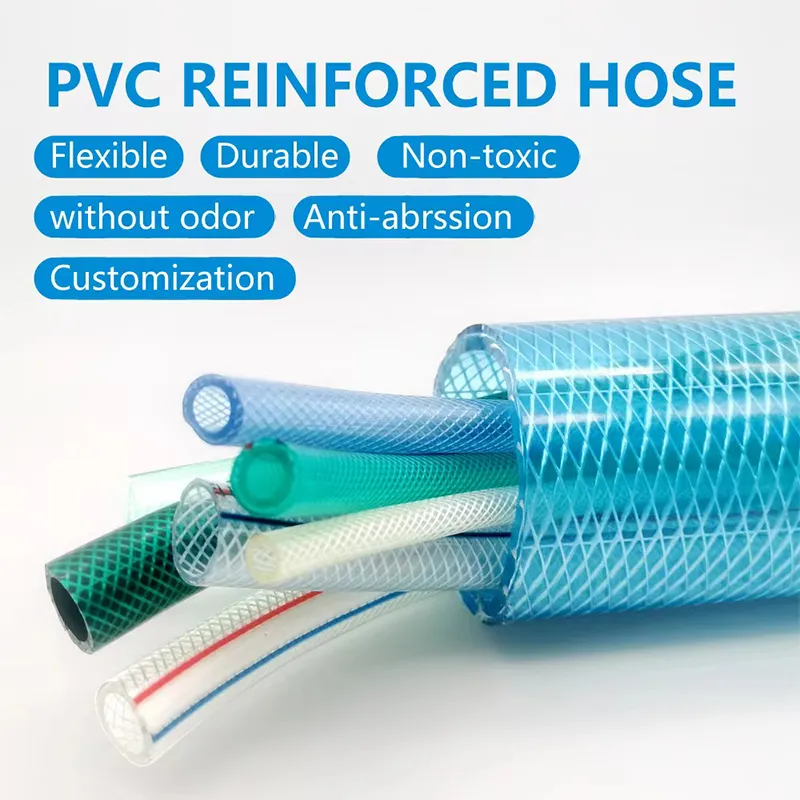transfer hose
Understanding the Importance of Transfer Hose in Industrial Applications
When it comes to fluid management in various industrial applications, transfer hoses play a crucial role. The term transfer hose broadly refers to a type of hose specifically designed to transport liquids, gases, and even solids between different points in a system. These hoses are essential in a multitude of industries, including oil and gas, chemicals, agriculture, and food processing, due to their versatility and the critical function they serve.
What is Transfer Hose?
Transfer hoses are engineered to withstand the specific conditions of the substances they transport, which can include extreme temperatures, high pressures, and aggressive chemicals. Typically made from materials such as rubber, PVC, or specialized thermoplastics, these hoses are designed with reinforced layers to increase durability and flexibility. The construction of a transfer hose often includes an inner liner that is chemically resistant, a reinforcement layer for added strength, and an outer cover that protects against environmental factors.
Applications of Transfer Hose
1. Oil and Gas Industry Transfer hoses are commonly used for transferring crude oil, refined petroleum products, and natural gas. They must adhere to stringent safety standards to prevent leaks and spills, which can have catastrophic environmental implications.
2. Chemical Manufacturing In chemical plants, transfer hoses are used to move hazardous and non-hazardous liquids between different parts of the facility. The hoses must be compatible with the chemicals being transported to prevent degradation and ensure safety.
3. Agriculture Farmers utilize transfer hoses for irrigation systems, transporting fertilizers, pesticides, and other liquids necessary for crop production. These hoses often need to be flexible and resistant to various environmental conditions found in agricultural settings.
4. Food Processing In the food industry, hygiene and safety are paramount. Transfer hoses designed for food applications are constructed from materials that comply with health regulations. They are used for transferring liquids such as oils, syrups, and juices.
Key Features to Consider
When selecting a transfer hose for a specific application, several factors must be considered
transfer hose

- Material Compatibility It’s essential to choose a hose that can withstand the specific chemicals or substances being transferred, preventing leaks and maintaining product integrity.
- Pressure and Temperature Ratings Each hose has its own specifications regarding the pressure and temperature it can handle. Confirming these ratings ensures safe operations.
- Size and Size Compatibility The internal diameter of the hose is critical for determining flow rates. Additionally, the hose should be compatible with the fittings and connections of the systems involved.
- Flexibility and Bend Radius Depending on the application, a hose with adequate flexibility may be required to navigate around obstacles or in tight spaces.
- Abrasion and Environmental Resistance Hoses exposed to harsh industrial environments may need additional protection against abrasion, UV exposure, or ozone attack.
Maintenance and Safety
Regular maintenance of transfer hoses is essential for ensuring their longevity and reliability. This includes routine inspections for signs of wear, leaks, or damage. Any hoses that show signs of deterioration should be replaced immediately to prevent accidents.
Proper training for staff involved in operating and maintaining transfer hoses can significantly enhance safety. This includes understanding the specific characteristics of the fluids being transferred and adhering to regulatory guidelines.
Conclusion
Transfer hoses are an indispensable part of modern industrial operations, facilitating the safe and efficient movement of various substances. Understanding their importance, features, and maintenance requirements is essential for businesses aiming to optimize their operations and ensure safety in the workplace. With the right type of transfer hose, industries can improve their efficiency, reduce the risk of leaks and spills, and maintain compliance with safety regulations. Investing in high-quality transfer hoses not only contributes to operational success but also promotes a safer environment for workers and the surrounding community.
-
Unrivaled Performance and Applications of PU Pneumatic Hoses and TubesNewsJun.11,2025
-
The Transparent World of Industrial Tubing and Hosing SolutionsNewsJun.11,2025
-
The Intricate World of Pneumatic Conduits: Tubes and HosesNewsJun.11,2025
-
The Dynamic Landscape of Pneumatic Conduits: Unraveling Key ComponentsNewsJun.11,2025
-
The Diverse Applications and Significance of Transparent PVC TubingNewsJun.11,2025
-
High - Pressure Pneumatic Tubing and Systems: An In - Depth LookNewsJun.11,2025














